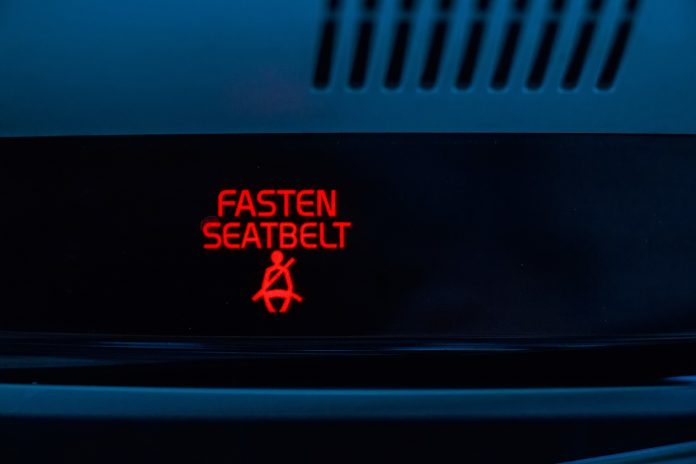The U.S. National Highway Traffic Safety Administration (NHTSA) is seeking comments on a potential update to Federal Motor Vehicle Safety Standard 208, which would require warning systems to alert drivers of vehicles that weigh less than 10,000 pounds that their rear passengers—potentially even those riding in school buses—are not wearing their seatbelts.
NHTSA wrote in its advanced notice of proposed rulemaking (ANPRM) published on Sept. 27 in the Federal Register, that while overall seatbelt usage has improved in recent decades, usage rates for rear seatbelts “have consistently fallen below those of front seats.” In fact, NHTSA said that only about three-quarters of rear passengers buckle up, compared to nearly 90 percent of passengers who are sitting in the front seats.
The proposed new rule would respond to a 12-year-old consumer advocacy group petition that would require that all passenger vehicles come equipped with the warning sensors for rear-seated passengers. Those devices would emit audible and/or visual alarms when any passengers are not wearing their seat belts. FMVSS 208 that regulates occupant crash protection in vehicles currently only requires this alert for the driver’s seat.
Related: Seatbelt Installation is Starting to Click
Related: Journalist Discusses Production of ‘Safe Enough?’ School Bus Seatbelt Documentary
Related: Iowa Becomes Fifth State to Require Lap/Shoulder Seatbelts In School Buses
Related: New Federal Bill Adds Fire Suppression Systems to Call for Seatbelts
NHTSA pointed out that most passenger vehicle manufacturers also voluntarily provide a seatbelt warning for the front passenger seating positions. However, only about 13 percent of model-year 2019 vehicles sold in the U.S. also have a rear seatbelt warning system.
The first such rear system was introduced in 2009 by Volvo, two years after Advocates for Highway and Auto Safety petitioned NHTSA to regulate the change.
Amending FMVSS 208 to require the rear seatbelt warnings also complies with a directive contained in MAP-21, the federal transportation reauthorization bill.
NHTSA invites public comment, including those from the school bus industry, through Nov. 26 on “a variety of issues related to a requirement for a rear seat belt warning system, including potential requirements for such systems, the vehicles to which they should apply, their effectiveness, the likely consumer acceptance, and the associated costs and benefits.”
While the vast majority of school buses have a gross vehicle weight rating of greater than 10,000 pounds, NHTSA said it wants to know if it should include school buses in the amended regulation. While NHTSA denied a petition in 2011 to mandate lap/shoulder seatbelt installation for all school bus passenger seating positions, four years later, then-Administrator Mark Rosekind encouraged all school districts nationwide to adopt the occupant restraints.
In last week’s ANPRM, NHTSA recognized that school buses and other such vehicles that have a larger number of rear seats and passengers, present “visual complexities and other challenges.” NHTSA also observed that requiring rear seatbelt sensors “might place additional cost burdens on school systems, given that such cost can lead to reductions in school bus service, resulting in greater risk to students.”
NHTSA officials also cited compartmentalization—the cushioned and high-back seats along with the spacing between each row of benches—that is present in large school buses that could reduce the risk of student crash injuries. However, the National Transportation Safety Board and several recent school bus crash tests have found that compartmentalization has a limited ability to protect unbelted passengers during side-impact and rollover crashes.
In some instances, tests show that compartmentalization fails in the types of crashes—front and rear impacts—that compartmentalization is thought to best protect the student riders.
Submit comments on docket number, NHTSA-2019-0093 at www.regulations.gov.
Editor’s Note: The original version of this story quoted NHTSA from the ANPRM as stating that compartmentalization is present in all school bus sizes. This statement is incorrect, as the seat spacing requirements are not applicable to school buses that weigh 10,000 pounds GVWR or less.















